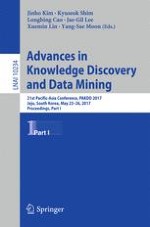
2017 | OriginalPaper | Chapter
Convolutional Bi-directional LSTM for Detecting Inappropriate Query Suggestions in Web Search
Authors : Harish Yenala, Manoj Chinnakotla, Jay Goyal
Published in: Advances in Knowledge Discovery and Data Mining
Publisher: Springer International Publishing
Activate our intelligent search to find suitable subject content or patents.
Select sections of text to find matching patents with Artificial Intelligence. powered by
Select sections of text to find additional relevant content using AI-assisted search. powered by